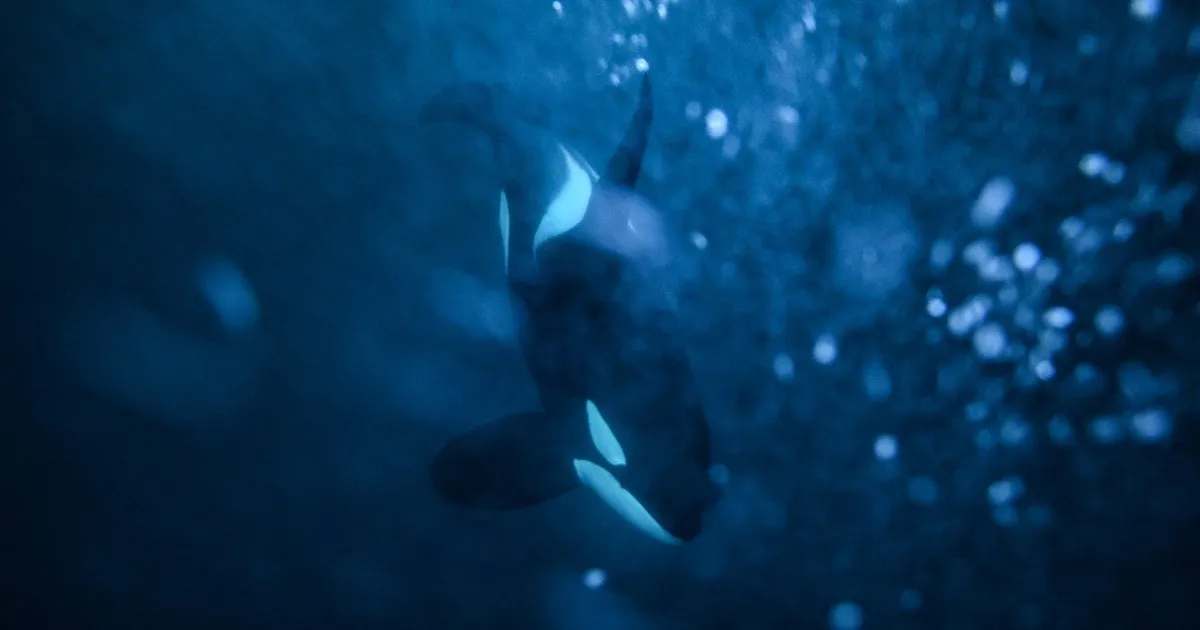
Recent studies have unveiled a fascinating aspect of orca behavior: these intelligent marine mammals have developed a taste for the livers of great white sharks. This unique predatory behavior was documented by researchers in the Gulf of California, Mexico, revealing how orcas, also known as killer whales, skillfully hunt these apex predators to obtain their fatty organs.
Scientists have captured stunning footage of two separate orca hunts in the Gulf of California, one occurring in 2020 and another in 2022. The videos illustrate how orca pods target young great white sharks by flipping them onto their backs, a technique that induces a state of tonic immobility. This tactic allows the orcas to slice open the sharks' sides and extract their nutrient-rich livers. The findings were published in the journal Frontiers in Marine Science on Monday, shedding light on this extraordinary predatory behavior.
In one video, all members of the orca pod partake in sharing the pink liver fat, while the remainder of the shark's body sinks into the ocean. Interestingly, during the hunt, a curious sea lion attempts to steal a meal, only to be deterred when the orcas blow bubbles, showcasing their coordinated efforts to protect their catch.
Marine biologist and documentarian Erick Higuera-Rivas, who filmed the orca hunts, initially underestimated the significance of the footage until he began editing it. “I saw in the monitor that the shark had the liver hanging out on the side, already popped off. And a few minutes later, they came up with the liver in their mouth,” Higuera-Rivas explained. His astonishment at discovering that these hunts involved great whites highlights the complex dynamics of marine ecosystems.
Heather Bowlby, a research scientist with Fisheries and Oceans Canada, emphasized the importance of this discovery. “We’re so conditioned to thinking of white sharks as the top of the food chain. It is always amazing to be reminded they are prey,” she noted, reinforcing the intricate relationships that exist within marine food webs.
The researchers identified the orcas involved in these hunts as the “Moctezuma pod,” which frequents the waters off Baja California and specializes in hunting elasmobranchs, including sharks and whales. Higuera-Rivas has been observing this pod for over a decade, documenting their adaptive hunting strategies tailored to specific prey.
Interestingly, the only prior evidence of orcas hunting great white sharks was from South Africa, where they have been known to target adult sharks and extract their livers, leaving behind carcasses. Alison Towner, a marine biologist at Rhodes University, remarked that while the hunting behavior in Mexico shares similarities with that in South Africa, the orcas in Mexico primarily target young sharks. This indicates that different orca groups may have independently developed their own hunting strategies.
The study highlights a remarkable insight into orca hunting techniques. Francesca Pancaldi, a coauthor of the study, explained that flipping the shark upside down induces tonic immobility, causing the shark to freeze and become vulnerable. “The liver is a fatty and nutritious organ that takes up about one-fourth of a shark's body, providing a lot of energy,” she added.
Researchers from both South Africa and Mexico believe that this behavior has likely existed for centuries, but advancements in drone technology have now enabled scientists to observe and document these hunts more effectively. Pancaldi speculated that climate change may have increased interactions between great white sharks and the Moctezuma pod, as there has been a notable rise in great white shark sightings in the Gulf of California over the past decade.
The implications of orca predation on great white sharks are profound. Towner noted that in South Africa, repeated attacks on great whites have forced them to abandon their traditional feeding and breeding grounds, reshaping the coastal ecosystem. “IRepeated predation has caused white sharks to abandon former core aggregation sites entirely,” she remarked, indicating a shift in marine populations.
The ecological balance is further affected as the absence of great whites has led to increases in populations of other species, such as cape fur seals and sevengill sharks, which in turn affects their prey. Towner pointed out that specific male orcas have been responsible for ongoing attacks on great whites in South Africa, highlighting the potential for similar changes in Mexico if orca predation becomes more common.
This groundbreaking research not only enhances our understanding of orca behavior but also underscores the complex interdependencies within marine ecosystems. As scientists continue to explore these relationships, the delicate balance of ocean life remains a critical focus for conservation efforts.